QDM- Effect of breeding related stress
#11
Nontypical Buck
Join Date: Apr 2008
Posts: 3,879
Have you ever considered comaparing the stressof being hunted for 4 moths compared to stree of less than one month of peak breeding competition?
Have you considered what percentage of the oveer wintering herd is effected by breeding stress, since around only 20% of our 2.5+ buck survive hunting season?
Have you considered what effect breeding stress would have on the health of the herd based on breeding rates, productivity, recruitment and the length of the breeding window?
Do you have any data that shows reducing the herd and imolementing ARs did anything to improve herd health in PA?
Have you ever seen a mature buck that died from breeding stress in PA?
Merry Christmas
Have you considered what percentage of the oveer wintering herd is effected by breeding stress, since around only 20% of our 2.5+ buck survive hunting season?
Have you considered what effect breeding stress would have on the health of the herd based on breeding rates, productivity, recruitment and the length of the breeding window?
Do you have any data that shows reducing the herd and imolementing ARs did anything to improve herd health in PA?
Have you ever seen a mature buck that died from breeding stress in PA?
Merry Christmas
#12
The only part of your statement I would disagree with is that stress from the rut increases for every age class. Imagine having 10 doe and 1 buck; and having 10 doe and 10 bucks. 10 to 1 would result in a 2nd and possibly 3rd rut...a much longer window. I feel that there would be a lot more stress in that scenario that in the herd with 10 doe and 10 bucks, because the stress would be absorbed by a lot more individuals. Another factor at play is they increase in stress due to fighting with more bucks in a balanced herd. You would think that a lot of the dominance hierarchy would get sorted out through posturing and body language, but as you eluded to that does not seem to be the case. On of the 2.5s I posted broke a g1 on nov 29-30...I would think that fights ending up in broken points wouldn't be happening that late.
I see it every time I use my decoy, every time a in mature buck encounters bobble head (my decoys name) their ears go strait back, their hair stands up on end and most of them will circle behind bobble walking stiff legged and proceed to knock bobble down, now the amazing thing is that bobble has 150 inch antlers.
Also during the rut we see just as many in mature bucks making rubs, scrapes, fighting, searching and chasing doe's as we do mature bucks, infact its not un common to have 4 or 5 bucks of every age class dogging the same doe right behind each other.
Here are numerous pics of in mature bucks fighting and displaying rutting behavior (I have many more pics just dont dont have time to locate them all in my PC. today)Pike

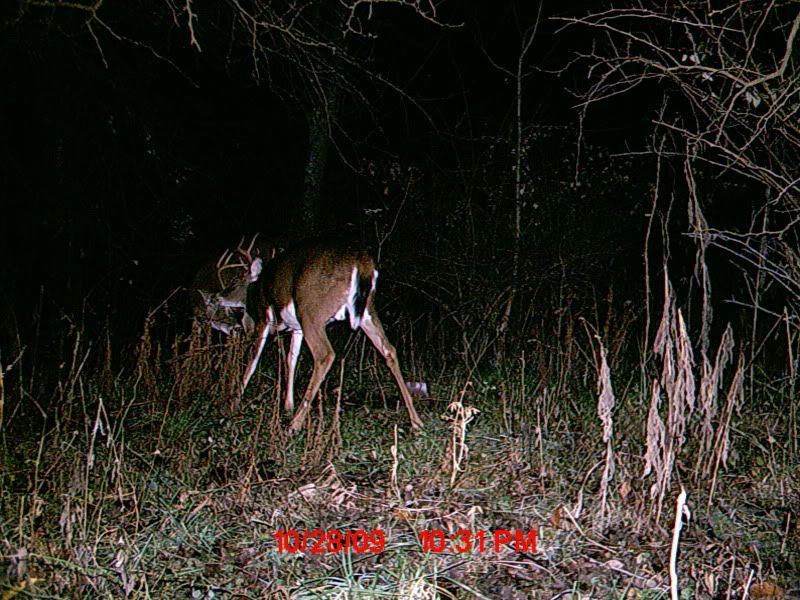


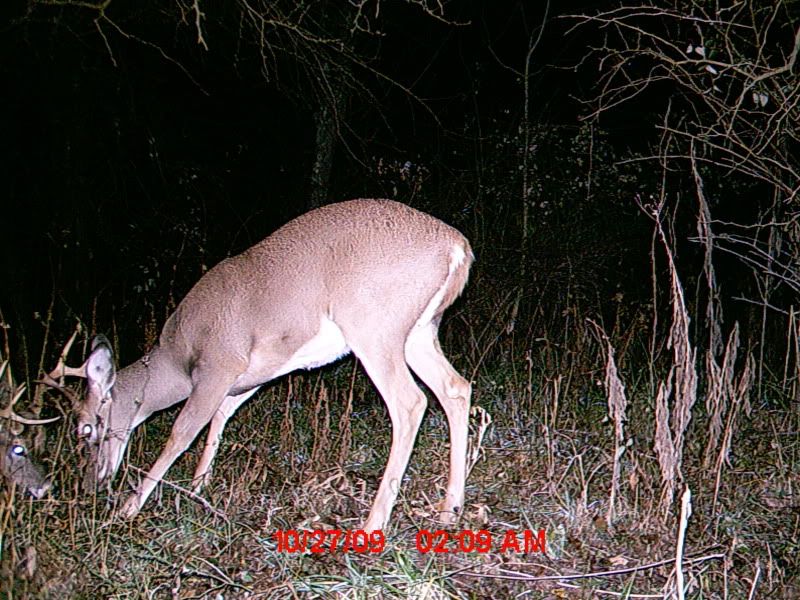

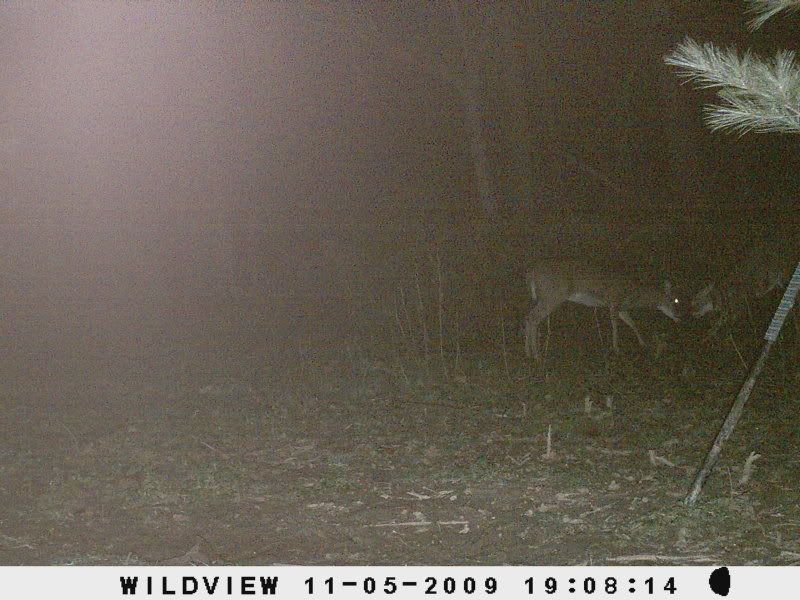
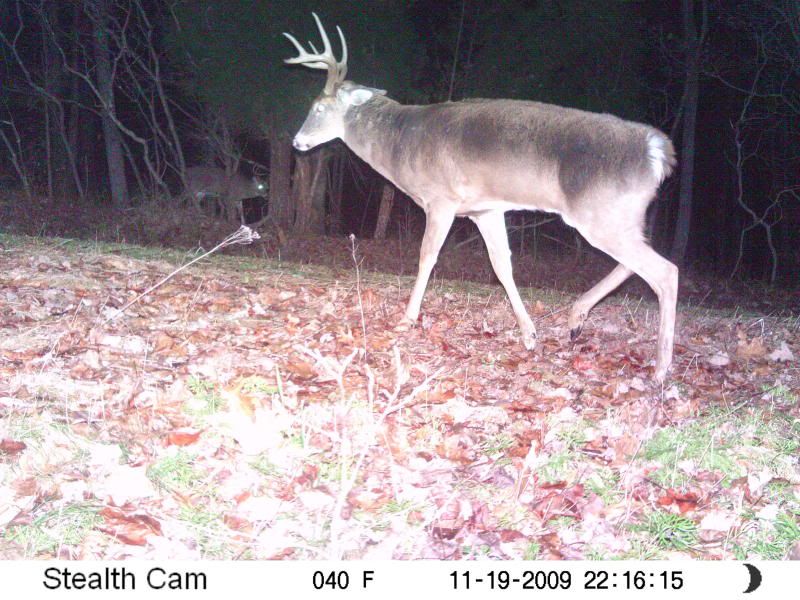
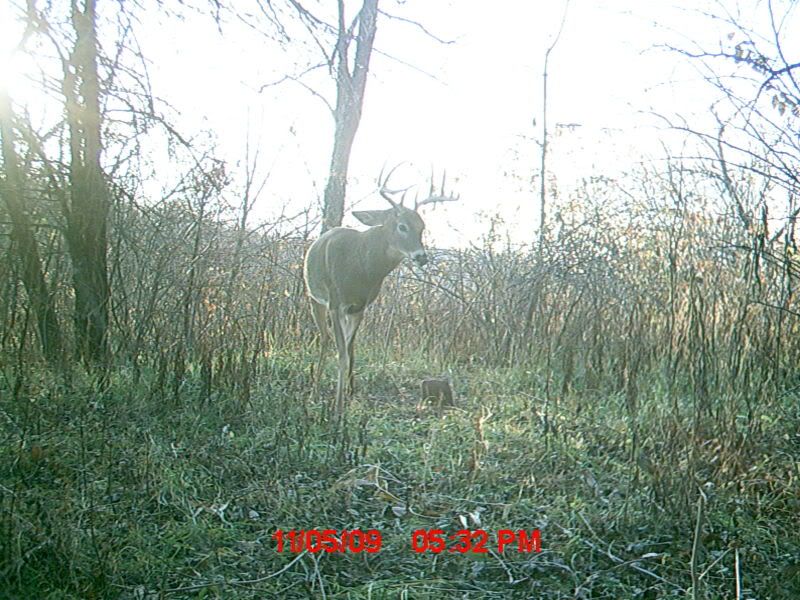
Last edited by J Pike; 12-25-2009 at 08:55 AM.
#13
Have you ever considered comaparing the stressof being hunted for 4 moths compared to stree of less than one month of peak breeding competition?
Have you considered what percentage of the oveer wintering herd is effected by breeding stress, since around only 20% of our 2.5+ buck survive hunting season?
Have you considered what effect breeding stress would have on the health of the herd based on breeding rates, productivity, recruitment and the length of the breeding window?
Do you have any data that shows reducing the herd and imolementing ARs did anything to improve herd health in PA?
Have you ever seen a mature buck that died from breeding stress in PA?
#14
glew I have studied my buck population which has a natural bredding ecology for the last 10 years, have you ever spent one day studying a herd that had a natural breeding ecology? And I can tell you that with out a shadow of a doubt that what you are claiming is 100% wrong. In mature bucks breeding behavior and does not get surpressed by the presence of bucks in older age classes, infact the amount of breeding behavior increases.
Here are numerous pics of in mature bucks fighting and displaying rutting behavior (I have many more pics just dont dont have time to locate them all in my PC. today)Pike
#15
glew re read my post I said here are pics of in mature bucks, (none of them are older than 2.5 years of age!!) Doesnt look like the bucks in my pics are showing any decrease in rutting behavior does it? Like I said you dont know what you are talking about and just posting what you read in a mag.( not trying to be rude etc.) By the way were did you ever here that a buck to doe ratio of 1:10 was possible??? Because it is impossible to have a buck to doe ratio of more than 1:3! Pike
#16
glew re read my post I said here are pics of in mature bucks, (none of them are older than 2.5 years of age!!) Doesnt look like the bucks in my pics are showing any decrease in rutting behavior does it? Like I said you dont know what you are talking about and just posting what you read in a mag.( not trying to be rude etc.) By the way were did you ever here that a buck to doe ratio of 1:10 was possible??? Because it is impossible to have a buck to doe ratio of more than 1:3! Pike
 ). I never read anything I've claimed in this post from a magaizine. Instead, I've heard it first hand from multiple nationally recognized managers, researchers, biologists, and authors. As I mentioned, the 10 to 1 ratio I was claiming was a hypothetical situation. As far as it being impossible to reach a ratio greater than 3 to 1, what ratio are we talking about, adult sex ratio, or antlered to antlerless ratio?
). I never read anything I've claimed in this post from a magaizine. Instead, I've heard it first hand from multiple nationally recognized managers, researchers, biologists, and authors. As I mentioned, the 10 to 1 ratio I was claiming was a hypothetical situation. As far as it being impossible to reach a ratio greater than 3 to 1, what ratio are we talking about, adult sex ratio, or antlered to antlerless ratio? One distiction I have failed to clarify is that of rutting behavior, and breeding related stress. While they're not mutually exclusive, that are distinct entities. There are a LOT of different rutting behaviors (fighting, breeding, chasing, etc.). To think that all of these activies contribute the same amount of breeding stress as the other is logically flawed. I feel it is possible to increase certain rutting behaviors, while still decreasing the overall impact of breeding related stress.
I will elaborate on the third example in my original post to clarify my stance. Again, keep in mind this is hypotheical; I simply want to demonstrate my views conceptually. My buddy witnessed 44 deer in one field one night: 43 doe, 1 yearling buck. Because all does will not get bred, this herd is in for a lengthy, drawn out rut. Keep in mind that the lone buck is absorbing all the stress (breeding, chasing, etc.) from that extended rut. Now lets say we took the same herd, instead this time theres 43 doe and 43 bucks. In this scenario we expect to see a decrease in the lenth of the rut because there is an increased likelihood all does will be bred on their 1st cycle. We would obviously expect to see more fighting, because there is increased competition for breeding rights. We also expect to see a decrease in the number of does bread by an individual buck (there's more bucks around to breed, so each has to breed a lesser number of does).
What I'm getting at is that your hypothesizing as to which breeding activities have a greater impact of their level of stress. You say fighting, I say length of rut. It's impossible to pull out what factors have what effect. IMO I would take the herd with the even buck/doe ratio, because the stress will get absorbed by a larger number of bucks. Each buck has to breed a lesser number of does, and will be active for a much shorted period of time. A rigorous 2 week rut allows them to get back to nutrition and recoupng their bodies faster than a 1.5 month rut that prevents them from physically recovering for at least another month.
Last edited by glew22; 12-25-2009 at 10:35 AM.
#17
Nontypical Buck
Join Date: Apr 2008
Posts: 3,879
I'm not sure what you're asking here. I'm not sure if its fail to draw a distinction with the over wintering herd, because all surviving deer would have been exposed to breeding stress during the rut. I would say that the population dynamics present during the rut would supercede over wintering in the examples I provided.
Breeding rates, recruitment, and length of the breeding window are all population characteristics dependent upon the sex ratio and and other factors (ex: deer density, habitat quality). I am suggesting that breeding strees fluctuates and the extent of breeding stress is dependent upon the population characteristics you mentioned.
Yes, I've witnessed the buck age structure in my area improve steadily for the last 5 years. By increasing the antlerless harvest over that time period it appears the intensity of the 2nd rut has declined.
Not personally, but it has happened. I believe Charlie Alsheimer used cameras and videos to document a case of this. He watched a dominant buck die after the breeding season, and determined that the buck did not die from old age, or any obvious wound.
#18
Alright bluebird. Since you love disagreeing with me, why don't you provide me with your explanation concerning the three examples I provided. I put forth my theory, you pulled out bits and pieces to argue definitions, while claiming that some of the FACTS I put forth are negligible.
Now you tell me, why did the dominant buck I've watched for three years have such lower antler growth rate than his subordinate counterpart. Also, why did the same scenario play out at MSU under Ozaga? Please enlighten me.
Now you tell me, why did the dominant buck I've watched for three years have such lower antler growth rate than his subordinate counterpart. Also, why did the same scenario play out at MSU under Ozaga? Please enlighten me.
#19
Nontypical Buck
Join Date: Apr 2008
Posts: 3,879
Now you tell me, why did the dominant buck I've watched for three years have such lower antler growth rate than his subordinate counterpart
#20
Have you ever considered comaparing the stressof being hunted for 4 moths compared to stree of less than one month of peak breeding competition?
Have you considered what percentage of the oveer wintering herd is effected by breeding stress, since around only 20% of our 2.5+ buck survive hunting season?
Have you considered what effect breeding stress would have on the health of the herd based on breeding rates, productivity, recruitment and the length of the breeding window?
Do you have any data that shows reducing the herd and imolementing ARs did anything to improve herd health in PA?
Have you ever seen a mature buck that died from breeding stress in PA?
Merry Christmas
Have you considered what percentage of the oveer wintering herd is effected by breeding stress, since around only 20% of our 2.5+ buck survive hunting season?
Have you considered what effect breeding stress would have on the health of the herd based on breeding rates, productivity, recruitment and the length of the breeding window?
Do you have any data that shows reducing the herd and imolementing ARs did anything to improve herd health in PA?
Have you ever seen a mature buck that died from breeding stress in PA?
Merry Christmas



